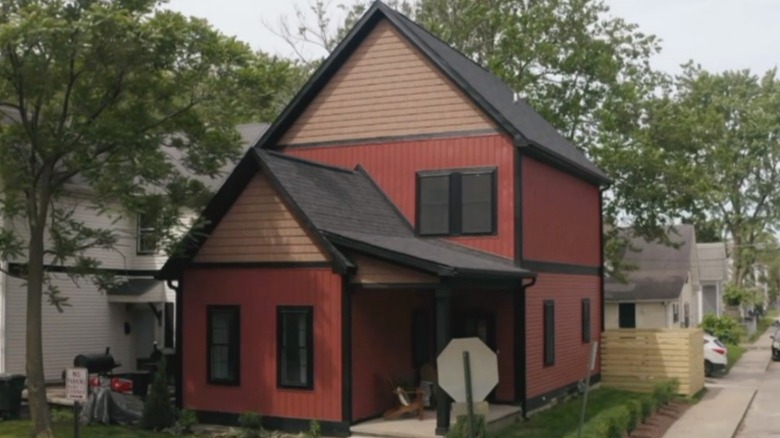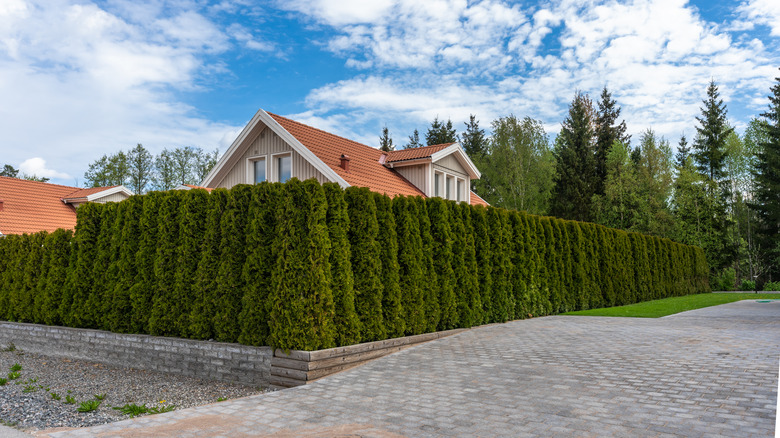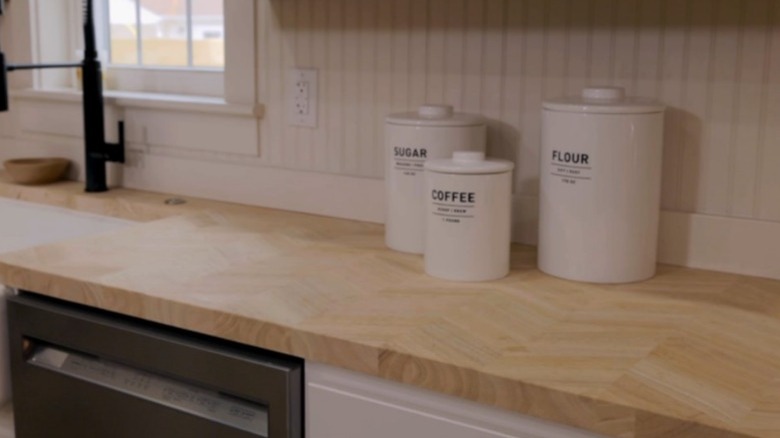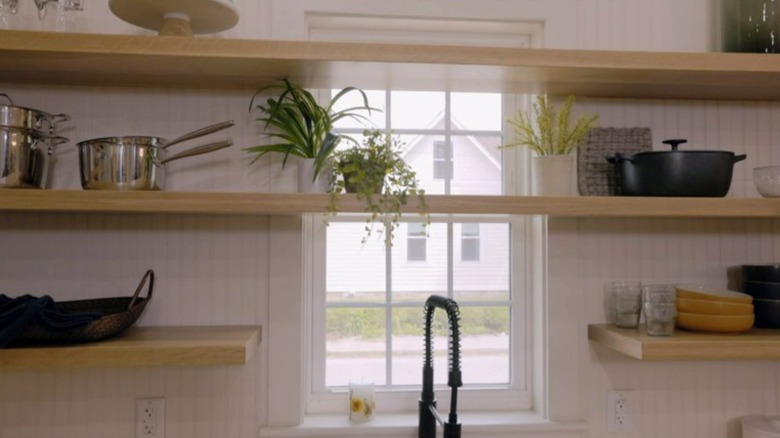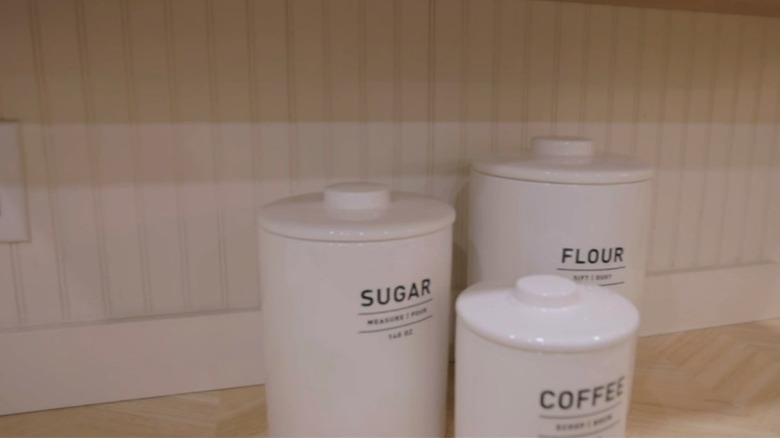5 Budget-Friendly Renovation Swaps Courtesy Of Good Bones
Like any good house flipper, HGTV's Good Bones' Mina Starsiak Hawk and her co-host and mother, Karen Laine, want to balance quality and cost without sacrificing style and design. They're all about renovating some pretty rough houses in Indianapolis Indiana and turning them into the pride of their neighborhoods, explains IndyStar. In Season 7, episode 4, Hawk and Laine purchased a 900-square-foot house with two bedrooms for $55,000.
The best news for Hawk is that Indianapolis recently changed its building code which allowed the Good Bones' construction crew to expand the footprint of the house. The end result for the new homeowner is a second-story addition, which added 3 bedrooms, one bathroom, and a smaller game room that could be used as an office or nursery. For Hawk and Starsiak it means selling their original investment for $294,000 and netting a profit of $89,000. Here are five design swaps that made the renovation budget-friendly.
Add detail with vinyl siding
When Mina Starsiak Hawk purchased the house it was already sided but in very poor condition, notes Realtor. Hawk and co-host, Karen Laine have already renovated and sold nine other homes in the same neighborhood. With this home, they want to create an urban-farm vibe. The cost of adding stucco or a stone veneer is not in the budget, so Hawk gets creative with vinyl siding. The main body of the house is done in barn-red, which is laid vertically to give it the polished look of board and batten styling. The gables are finished with wood shingles in a dark wheat color, and the windows, gutters, and trim are finished in black.
Amid all of the white, and lighter color houses on the street, this renovation really stands out and looks like it would be just as at home on a few acres of land in the country, as it is in downtown Indianapolis.
Natural fences
The current house renovation is on a corner plot which Karen Laine says needs a shrub fence rather than a traditional fence, reports Realtor. This not only saves money but allows the homeowner to add more or less privacy depending on how the shrubs are trimmed once they mature. A small shrub can range from $25 to $45 each, plus labor which is about $40 to $80 per hour, according to New Home Source. Natural fences also help block out street noise, which for this house located at a busy intersection is likely needed.
Laine said that you can save money by buying shrubs that are not fully mature. There are several factors to determine how far apart to plant shrubs, according to Washington State University, including the final size of the mature shrubs and the look that you want. In this case, Laine explained that the shrubs will grow to about 4 or 5 feet in height and about 3 feet wide.
Butcher block counters
The look of the kitchen continued the urban-farmhouse vibe, explains Realtor, with a very unique choice of butcherblock laid out in a herringbone pattern for the counters. This updated style choice makes the kitchen design and appliances stand out. It also helps to keep the costs down when compared to higher-end options such as granite or quartz, and turns out to be exactly what the homeowner prefers.
Butcherblock is a very traditional material, which makes sense in a farmhouse design and adds a warm, cozy vibe. If you're someone who likes to chop directly on your countertops, the wood will develop a patina, which adds to the style. If that's not the look you like, according to Precision Countertops, you can lightly sand the counters and apply a stain to alter the color of the grain then complete them with a protective mineral oil to restore the finish.
Open kitchen shelving
Mina Starsiak Hawk chose floating shelves instead of using wall cabinets in the kitchen (per Realtor). The wood shelves match the butcherblock counters and continue the rustic farmhouse-style design. Adding shelves also creates a feeling of openness and space in the room. While Hawk acknowledges that open shelves are not a new idea, she was inspired by a photo she had seen, which split the shelves across a window. The homeowner, who is very into gardening, was excited about the shelves around the window as a great space to display some of his plants.
According to Kitchen Cabinet Kings, the average cost for entry-level cabinets is $80 to $400 per linear foot. Floating shelves, on the other hand, cost between $60 to $500 in total, explains according to Mad City. Depending on your choice of material and quantity, installing floating shelves may be something that can be done as a DIY project.
Beadboard instead of kitchen tile
Another cost savings measure in this renovation project was adding a beadboard backsplash from the countertops to the ceiling, and continuing that around the kitchen. Beadboard panels are available in various types of materials and with different profile designs. The cost for a laminated plywood panel is $75 for a 4-foot by 8-foot sheet, notes Mantel Craft.
Since the Good Bones construction crew does all of the labor themselves, using beadboard panels saved money over white subway tile, and is more in keeping with their overall farmhouse design. However, if you are considering using tile, the cost may not actually be that much more. According to Sweeten, porcelain subway tile costs about $2 to $3 per square foot. The big difference is that each tile has to be laid individually, while a beadboard sheet can be installed much quicker, also saving on labor.

